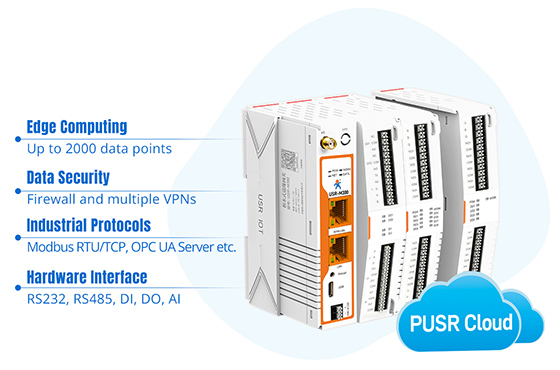In today’s era of smart factories and industrial automation, connectivity is everything. Businesses across manufacturing, logistics, energy, and transportation rely on seamless data exchange between machines, sensors, and networks to function efficiently. However, as technology evolves, many organisations face the challenge of connecting legacy serial devices with modern Ethernet or wireless systems. This is where serial device server and industrial gateways come in — essential tools that bridge the gap between old and new technologies.
What Is a Serial Device Server?
A serial device server (also known as a serial-to-Ethernet converter) is a networking device that allows serial-based equipment, such as RS-232, RS-422, or RS-485 devices, to communicate over Ethernet networks. In simple terms, it converts serial data into IP-based data so that older industrial machines can be monitored, managed, or controlled remotely using modern IT infrastructure.
Serial device servers are commonly used in applications such as:
-
Industrial automation and control systems
-
Building management and HVAC systems
-
Energy and utility monitoring
-
Transportation and logistics
-
Remote equipment monitoring
By integrating serial device servers, companies can modernise their existing equipment without having to replace expensive hardware.
How Serial Device Servers Work
Serial device servers act as communication bridges. They are equipped with one or more serial ports on one side and Ethernet or wireless interfaces on the other.
Here’s a simplified overview of their process:
-
A serial device (for example, a PLC, barcode scanner, or sensor) sends data through its serial interface.
-
The serial device server captures this data and converts it into a TCP/IP packet.
-
The converted data is then transmitted over an Ethernet or Wi-Fi network to a host computer, SCADA system, or cloud platform.
-
Responses from the host can be sent back through the same route, ensuring two-way communication.
This conversion enables legacy devices to become part of an Industrial Internet of Things (IIoT) ecosystem without major hardware changes.
Key Features of a Serial Device Server
Modern serial device servers come with advanced capabilities that make them suitable for demanding industrial environments. Some essential features include:
-
Multiple Serial Interfaces: Support for RS-232, RS-422, and RS-485 standards.
-
Web-Based Configuration: Easy setup and management via web browser or network utility.
-
Secure Communication: Built-in support for SSL/TLS encryption and user authentication.
-
Redundant Power Inputs: Ensures stable operation in critical systems.
-
DIN-Rail Mounting: Designed for easy installation in control cabinets.
-
Wide Temperature Range: Built to withstand harsh environmental conditions.
These features make serial device servers both reliable and versatile for various industrial applications.
What Is an Industrial Gateway?
While serial device servers focus on connecting serial devices to Ethernet networks, industrial gateways go one step further. An industrial gateway acts as a data translator and protocol converter between different communication standards used in industrial systems.
For example, a gateway might connect a Modbus RTU-based device to a Modbus TCP or MQTT network. In modern factories, this capability is crucial because different machines often use different communication protocols.
Industrial gateways ensure interoperability — allowing PLCs, sensors, and controllers from different manufacturers to work together seamlessly.
Functions of an Industrial Gateway
Industrial gateways perform several critical functions:
-
Protocol Conversion
Converts communication between industrial protocols such as Modbus, EtherNet/IP, PROFIBUS, MQTT, and OPC UA. -
Edge Computing
Some gateways perform local data processing before sending it to the cloud. This reduces network load and enables faster decision-making. -
Data Logging and Monitoring
Gateways often store and forward data, ensuring no information is lost during temporary network failures. -
Cybersecurity and Network Segmentation
They enhance security by isolating operational technology (OT) systems from IT networks, reducing cyberattack risks. -
Cloud Connectivity
Many modern industrial gateway connect directly to cloud platforms like AWS IoT, Azure IoT Hub, or private data servers for real-time analytics.
Serial Device Server vs. Industrial Gateway
Although both devices serve as communication bridges, their roles differ slightly:
| Feature | Serial Device Server | Industrial Gateway |
| Primary Function | Converts serial to Ethernet | Converts protocols between different networks |
| Complexity | Simpler setup | More advanced and programmable |
| Use Case | Connecting legacy serial devices | Integrating entire systems or IIoT platforms |
| Cloud Connectivity | Limited | Often included |
| Data Processing | Basic | Supports edge computing |
In many cases, an industrial gateway includes serial device server functionality, making it a more comprehensive solution for modern automation systems.
Applications of Serial Device Servers and Industrial Gateways
Both technologies are used across various industries that rely on connected systems:
-
Manufacturing: Connecting PLCs, robots, and machine controllers for real-time monitoring.
-
Oil and Gas: Linking remote sensors and SCADA systems across long distances.
-
Energy and Utilities: Monitoring power meters, transformers, and renewable energy assets.
-
Transportation: Managing traffic systems, GPS trackers, and digital signage.
-
Smart Cities: Integrating lighting, surveillance, and public infrastructure systems.
Their flexibility and reliability make them essential for organisations embracing digital transformation.
Benefits of Implementing Serial Device Servers and Gateways
-
Extended Equipment Lifespan
Older serial devices can continue to operate efficiently within new network frameworks. -
Improved Data Accessibility
Real-time monitoring and remote access improve operational visibility and decision-making. -
Reduced Downtime
With advanced diagnostics and redundancy, communication remains stable even under network stress. -
Cost Savings
Businesses can modernise existing systems without investing in entirely new machinery. -
Future-Ready Connectivity
Gateways enable migration towards IoT and Industry 4.0 without disruption.
Choosing the Right Solution
When selecting a serial device server or industrial gateway, consider:
-
Number of serial ports and protocol support
-
Environmental durability (temperature, humidity, vibration)
-
Security features (firewalls, encryption)
-
Cloud and SCADA compatibility
-
Ease of configuration and maintenance
Leading manufacturers like Moxa, Advantech, HMS Networks, and Siemens offer reliable, industry-grade solutions that meet a wide range of needs.
The Future of Industrial Communication
As industries move further towards automation and smart connectivity, the demand for flexible communication devices will continue to grow. Serial device servers and industrial gateways are not just bridging technologies — they are the backbone of digital transformation.
They enable legacy equipment to join modern networks, facilitate cloud integration, and make real-time data a reality for all levels of industrial operations. In essence, they connect the past with the future, ensuring that every machine, no matter how old, can play a role in the intelligent industries of tomorrow.



